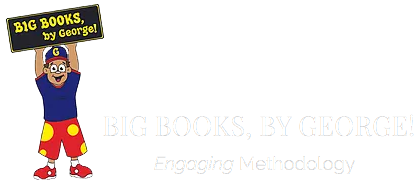Why Preschool Big Books Are Key to Reading Success
Imagine a classroom buzzing with the sounds of excited little voices, their eyes wide with anticipation as they gather around a giant book perched on an easel. This is no ordinary reading session – it’s a gateway to a world where letters and words start to make sense to young minds. Welcome to the engaging universe of preschool big books, where early literacy takes center stage in a way that’s both entertaining and educational for our youngest learners. Today, let’s explore how these oversized reading materials are revolutionizing the way we introduce reading and writing to preschoolers, setting them on a path of learning and discovery that can influence their academic future.
Unlocking the World of Words
Preschool big books are exactly what they sound like – large books designed specifically for a preschool audience. The text is printed in a large, clear font, accompanied by colorful and captivating illustrations that tell a story even before the words are fully understood. These books are pivotal in fostering a love for reading at a tender age, where traditional books may still be intimidating for little ones still mastering the intricacies of the alphabet.
Moreover, big books are an excellent resource for teachers to demonstrate reading concepts. For example, they can point out letters, words, and punctuation marks with ease, making these elements visible to the entire class. As a result, children begin to grasp the basics of reading, such as text directionality and word recognition, without even realizing they are learning.
Building Vocabulary and Understanding
Through repetitive and rhythmic stories found in preschool big books, children naturally enhance their vocabulary. They become familiar with sentence structure and start to understand storytelling elements such as characters, setting, and plot. This exposure lays the groundwork for more complex reading and comprehension skills as they progress in their education with BBBG.
Additionally, the shared experience of reading big books promotes interactive dialogue. Teachers often pause to discuss the story, ask predictive questions, and encourage children to express their thoughts. This interaction not only reinforces language development but also sparks critical thinking and personal connection to the reading material.
Fostering a Sense of Community
Group reading sessions with preschool big books are more than just educational; they are a communal activity that promotes social skills. Children learn to take turns, listen to others, and respect the group’s reading time. This sense of community and shared learning experience is vital in early childhood development, as it fosters cooperation and empathy among young learners.
Moreover, big books can be a fantastic tool for inclusivity. The large print and vivid illustrations are accessible to children with different learning needs, ensuring that every child can participate and enjoy the experience.
Incorporating Interactive Elements
Many preschool big books come with interactive features such as flaps to lift, textures to touch, and questions that invite participation. These tactile elements keep children engaged and help those who learn best through doing and touching. They transform reading from a passive activity into an interactive session, where every page turn can lead to a new discovery.
Enhancing Emotional Development
The themes explored in big books often revolve around emotions, family, friendship, and other relatable experiences for preschoolers. By identifying with characters and their feelings, children learn to understand and express their own emotions better. This emotional connection is crucial in early literacy as it motivates children to keep returning to books to learn more about themselves and the world around them.
Preparing for Academic Success
As children become comfortable with big books, they build confidence in their reading abilities. This self-assuredness is critical when transitioning to smaller, individual books. Early positive experiences with reading can influence a child’s attitude toward learning throughout their academic career, making the role of big books in preschool indispensable.
Encouraging Home Reading Practices
Preschool big books also have a place in the home. They can bridge the gap between school and home literacy practices, as parents can easily read along with their children. This shared reading time not only reinforces the skills learned in class but also strengthens parent-child bonds through the shared love of reading.
Conclusion
Preschool big books are a powerhouse of early literacy, with their ability to captivate, educate, and inspire young learners. These oversized wonders are not just tools for teaching the alphabet or expanding vocabulary; they are a foundation for lifelong learning and curiosity. By incorporating big books into the preschool curriculum, educators are not just teaching children to read – they are igniting a flame of enthusiasm for stories, language, and the pleasure of discovering new concepts.
The benefits of these books stretch far beyond the classroom. They encourage inclusivity, build social and emotional skills, and serve as a connecting bridge between school and home learning environments. Perhaps most importantly, they instill confidence in young readers, setting them up for a successful transition to more advanced literature.
As we consider the future of education and the role of literacy in early childhood development, let’s not overlook the simplicity and power of preschool big books. In these pages lies not just stories and pictures, but the building blocks for a successful and enthusiastic reader. Therefore, let’s continue to prioritize these resources and recognize their significant impact on our children’s educational beginnings. After all, a child who loves to read is a child who is prepared to learn, grow, and eventually, lead.
Read More:
